
PUMPA - SMART LEARNING
எங்கள் ஆசிரியர்களுடன் 1-ஆன்-1 ஆலோசனை நேரத்தைப் பெறுங்கள். டாப்பர் ஆவதற்கு நாங்கள் பயிற்சி அளிப்போம்
Book Free DemoThe Path of Liberation:
- Jainism believed in the ultimate liberation of the soul and did not believe in life after death. The Jaina principles emphasized attaining Moksha as the only way of escaping karma.
- Mahavira also displayed the three tenets that are to be followed to attain the path of liberation, known as the “Triratna / Three Jewels” of Jainism—also known as the “Three-fold Path”.
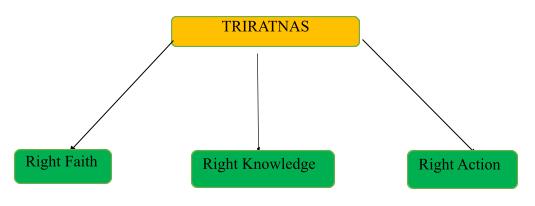
The Five Doctrines of Jainism
- Mahavira, through his worldly experience and actions preached the methods that led him to the path of Kevala or Supreme knowledge. He emphasized to his followers to renounce worldly pleasures, which was the first step towards liberation.
- He also mentioned certain practices/ideals that are to be followed religiously by his followers to have a morally sound life, which later came to be known as the Code of Conduct for the Jaina People.
Five principles
2. ASTEYA – Not stealing
3. APARIGRAHA – Not to acquire property
4. SATYA – Speaking truth
5. BRAHMACHARYA – Living the life of Celibate
The emergence of Sects in Jainism:
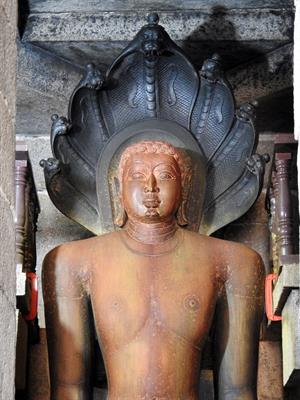
Bhadrabahu
- During the later part of the Jainist History, different sects emerged within Jainism. These sects are said to be the by-product of a “Great Famine” that struck the lands of Magadha, which forced a group of Jain people under the leadership of “Bhadrabahu” to move towards the southern parts of India.
BHADRABAHU: He is a Jainist scholar who was also well known in history as the “Guru of Chandragupta Maurya”, the greatest king of the Maurya dynasty.
- The Famine that struck the Northern settlements lasted for 12 years .The group under Bhadrabahu in South India adopted rigorous practices during this period, while the Northern followers of Jainism took liberal traditions.
- When Bhadrabahu returned to the North, he witnessed the change that had crept in that place, leading to the division of sects within Jainism.
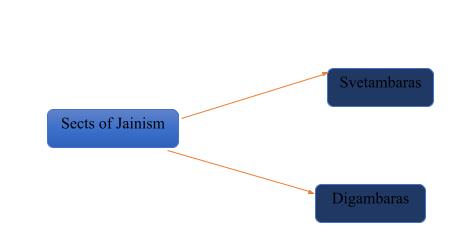
Svetambaras
- They were considered the liberals among the two sects and are progressive in thoughts and actions.
- Sthulabadra was considered a great exponent of this sect.
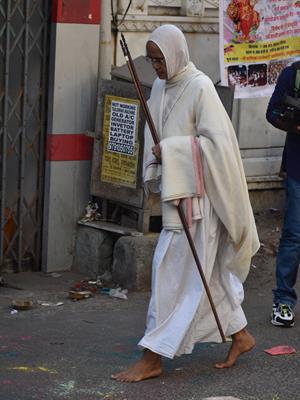
Svetambaras
- They are allowed to wear white clothes to cover themselves, and have Rajoharana (Broom with woollen threads) to clean their place.
- People of this sect followed only four of the Five principles propounded by Mahavira. They did not adopt the practice of Brahmacharya.
- They strongly believed that women could also achieve liberation similar to men.
Digambaras:
- Male followers of this sect are prohibited from wearing clothes, so they practised complete nudity.
- Female followers were allowed to wear plain white sarees.
- Bhadrabahu was considered the greatest exponent of the Digambara sect.
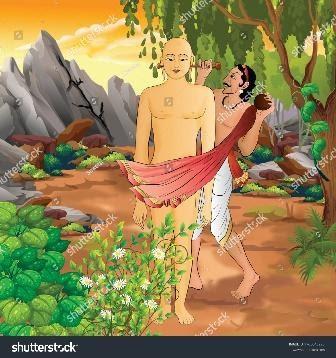
Digambaras
- The Digambaras are highly conservative as they followed strenuous methods to attain liberation.
- They believed that women are not capable of attaining liberation.
- Digambaras religiously followed all the five principles spelt by Mahavira.
Jain Councils
- The leaders of Jainism also conducted Jain councils to spread the teachings and principles of Jainism to different parts of the country. It also allowed the gathering of numerous exponents and ardent followers of the religion to meet and exchange their ideas towards the development of Jainism.
- It also witnessed important events like the compilation of various literary sources that speaks the richness of Jainism.
- The leaders had two such councils, and they are given below.
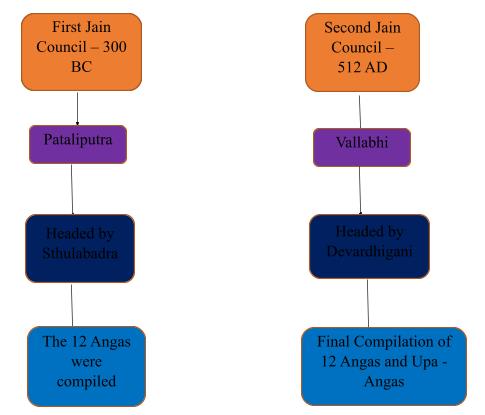
Reference:
Bhadrabahu - Shivram / Shutterstock.com
Reference:
Svetambaras - johntallboy / Shutterstock.com